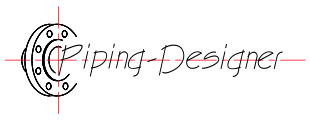Transverse Strain
Transverse Strain Formula |
||
| \( \epsilon_t \;=\; \dfrac{ \Delta D }{ D }\) | ||
| Symbol | English | Metric |
| \( \epsilon_t \) (Greek symbol epsilon) = Transverse Strain | \( dimensionless \) | \( dimensionless \) |
| \( \Delta D \) = Transverse Dimension | \(in\) | \(mm\) |
| \( D \) = Initial Transverse Dimension | \(in\) | \(mm\) |
Transverse strain, also called lateral strain, is a measure of the deformation of a material in a direction perpendicular to the direction of an applied force. When a material is subjected to a longitudinal stress (a force applied along its length), it will elongate or contract in the direction of the stress. Simultaneously, it will experience a change in its transverse dimensions (width or diameter). The relationship between transverse strain and longitudinal strain is described by Poisson's ratio.
If a tensile longitudinal stress causes a contraction in the transverse direction, the transverse strain is considered negative. Conversely, a compressive longitudinal stress causing a transverse expansion results in a positive transverse strain.
The transverse dimension of an object is its measurement in a direction perpendicular to its length or the direction of an applied force or a wave's propagation. Basically, it describes the object's width or diameter. If you have a long rod, its length is one dimension. The transverse dimension would be its thickness or diameter (measured across, not along its length). For a wave traveling horizontally along a string, the transverse dimension would be the vertical displacement of the string at any point. When a beam bends under a load, the transverse dimension we're interested in for strain would be its width or depth (the dimensions perpendicular to the beam's length).

